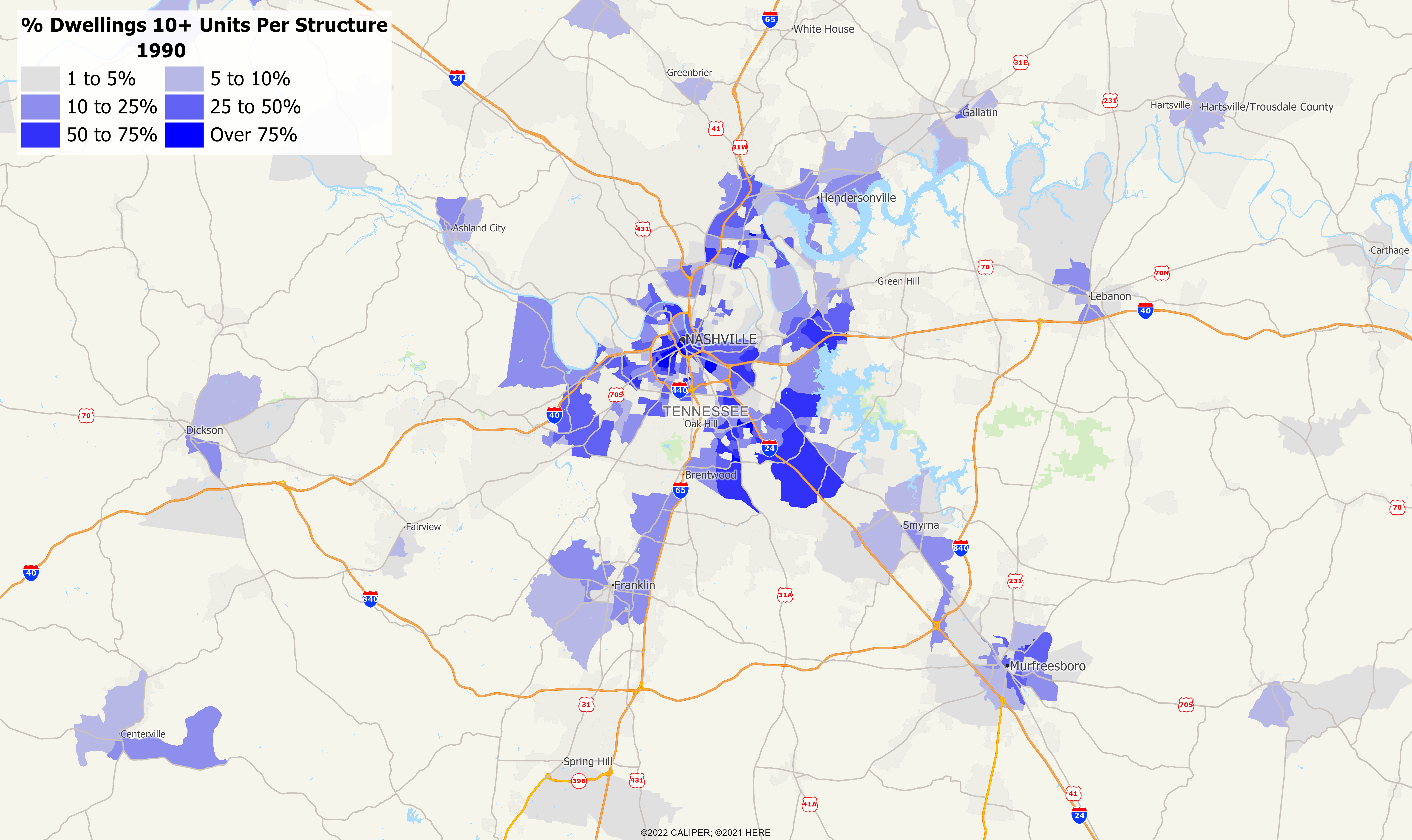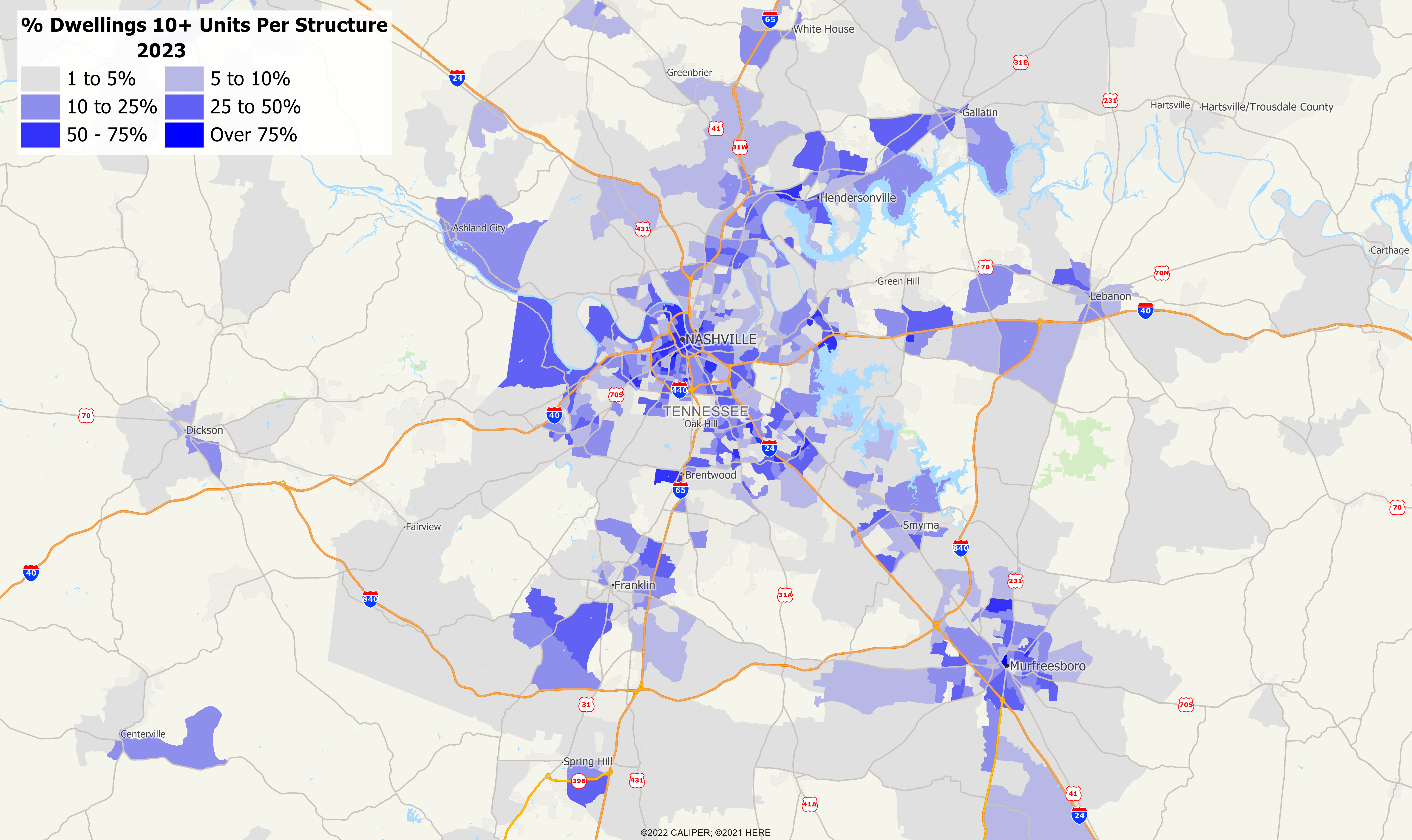It has been well documented that major metropolitan areas are prioritizing multi-family housing, and in some cities, empty office buildings are being converted into multi-family housing units. This upswing in apartment complexes, townhomes and condos can be attributed to a few things, mainly quick approval process, tax incentives, and housing affordability. However, it isn’t just major cities where these units are popping up, but also in suburban areas that historically have been home to mostly single-family homes.
As a case study, we looked at the Nashville metropolitan area, mapping the percentage of households who live in dwellings with more than 10 housing units. This picks up those typical 3 story, “garden apartments” that are often located in suburban areas. The first map illustrates data for 1990, the second for 2023.


One of the more obvious shifts include apartments deep into the suburbs, around the old town center of Franklin, along the I-840 bypass route, north along I-65 and east towards Henderson and Gallatin, and east along I-40 to Lebanon. These multi-family structures are increasingly being built in suburbs, as well as on land that is being redeveloped in existing areas of the city. The “gulch” has been transformed from an industrial area just west of downtown to a vibrant mix of apartment buildings and upscale retail, restaurants, and bars. Areas where there were no apartments 30 years ago, now have plenty to choose from.
A suburban attraction for Nashville visitors has been the famous “Loveless Café”, located on TN 100 on the southwest side of the city. While the area it is found in may have started out as “off the beaten path,” it has been developed over the last decade. Originally, there were just large estate style lots well off the highway. Today, however, there are at least half a dozen large garden apartment type developments fronting the road. This area is far from downtown in a suburban area, and as conventional wisdom would have it, a very atypical place for these types of apartments.
Nashville is not the only area experiencing this change. In most parts of the country, the push away from single family suburban developments towards higher density development is made easier by fast-track type approvals. Tax incentives are also given to developers building multi-family units, especially if they include a certain percentage of section 8 housing. In 2021, California signed into law a bill that forces cities to approve more multi-family housing units in single-family zoned areas. The benefit, of course, is affordable housing for people who need it. It has, however, made single-family unit permits for new construction hard to come by, and some wealthy cities, like Beverly Hills, are exempt from this new law.
As multi-family units change the landscape of suburban areas, the demographic makeup of these areas is also bound to change.
